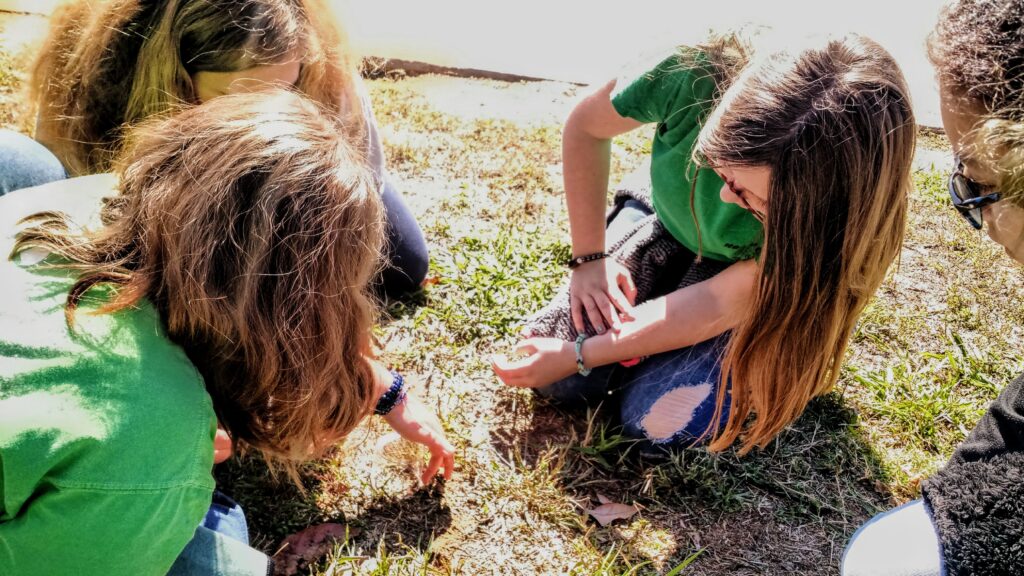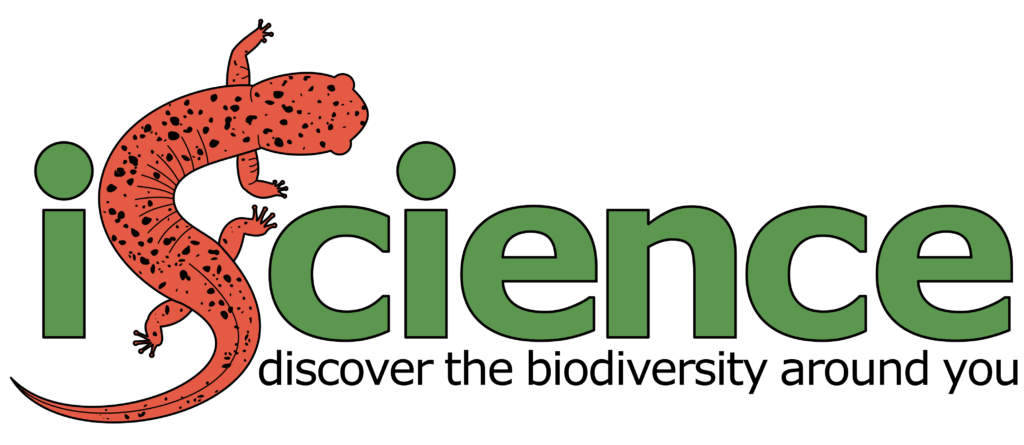
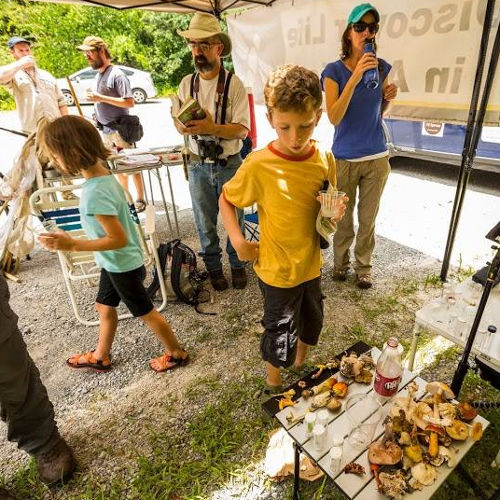
iScience is a schoolyard biodiversity program designed for students in grades 5-8. It was created in partnership by Discover Life in America and the Tennessee Valley Authority (TVA). The iScience program invites students to become community scientists, studying local plants, animals, and other life.
iScience uses the All Taxa Biodiversity Inventory (ATBI) model, bringing ATBIs to schoolyards within the TVA iScience Program Area (see map). Students conduct ATBIs at their schools using the iNaturalist app, collecting real scientific data about local biodiversity.
About iScience
How does iScience work?
To learn about local biodiversity, students conduct bioblitzes – documenting as many kinds of animals, plants and other organisms as they can find.
Students search for life in their schoolyards and nature study areas, using the iNaturalist app to record the species they find. Some of our participating schools have recorded hundreds of different species! Check out their iNaturalist projects here.
Identifying observations
iNaturalist’s image recognition technology can help identify species from photos, or students can use guide books and other resources to learn about the species they find. Other iNaturalist users can also comment on and help ID observations.
A note about children using iNaturalist
iNaturalist observations are public. Teachers will want to take special care to protect the privacy of their students and to comply with the law. Children under 13 can only create an iNaturalist account with parental permission (using this form). Please read the section Children and the Law on this guide for more information and ideas for working with younger students, such as creating a teacher-administered iNaturalist account for your class.
Participants & Eligibility
Classes and schools with students in grades 5-8 in the TVA iScience Program Area (tan areas in the map) are eligible to apply. See all participating schools here.
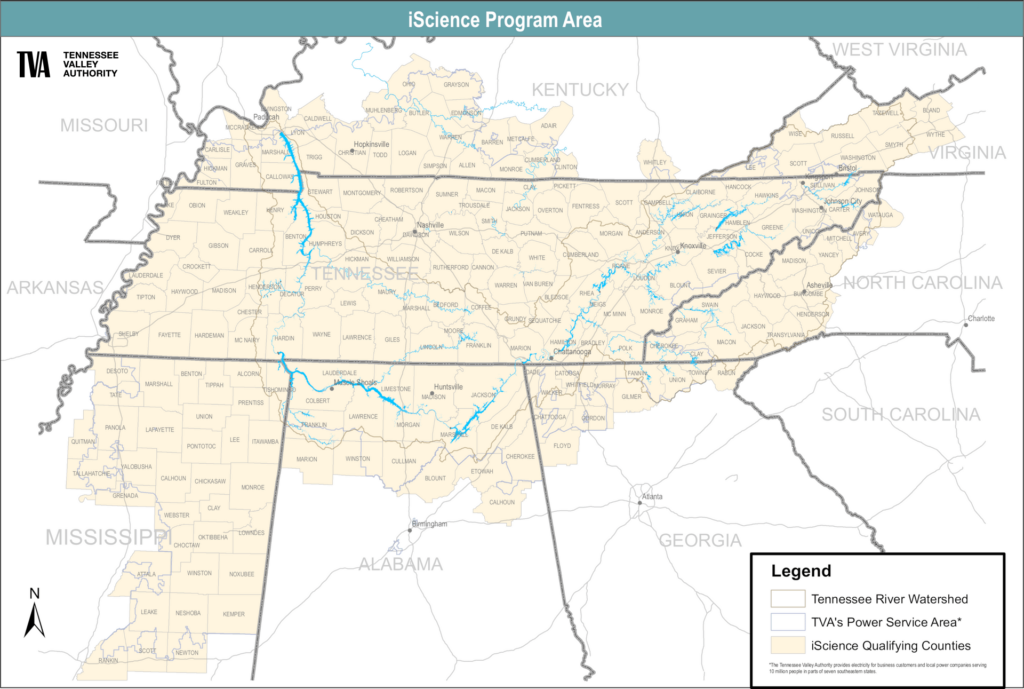
Program Requirements
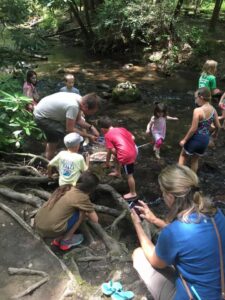
Responsibilities of school/educator
commit to 3 years of the iScience program
conduct 2 searches for living things (bioblitzes) each year on the school grounds (or an alternative site)
upload an average of 3 iNaturalist observations per student annually to your project
at least once per year, invite a local scientist or nature enthusiast to speak to your class about a group of organisms (insects, plants, mushrooms, birds, etc.)
submit an annual project report of findings to iNaturalist’s social media community
Resources
iScience materials
DLiA provides iScience kits with nets, collecting jars, field guides, and a tablet free of charge to participating schools. Find out if your school is eligible to receive an iScience kit here!
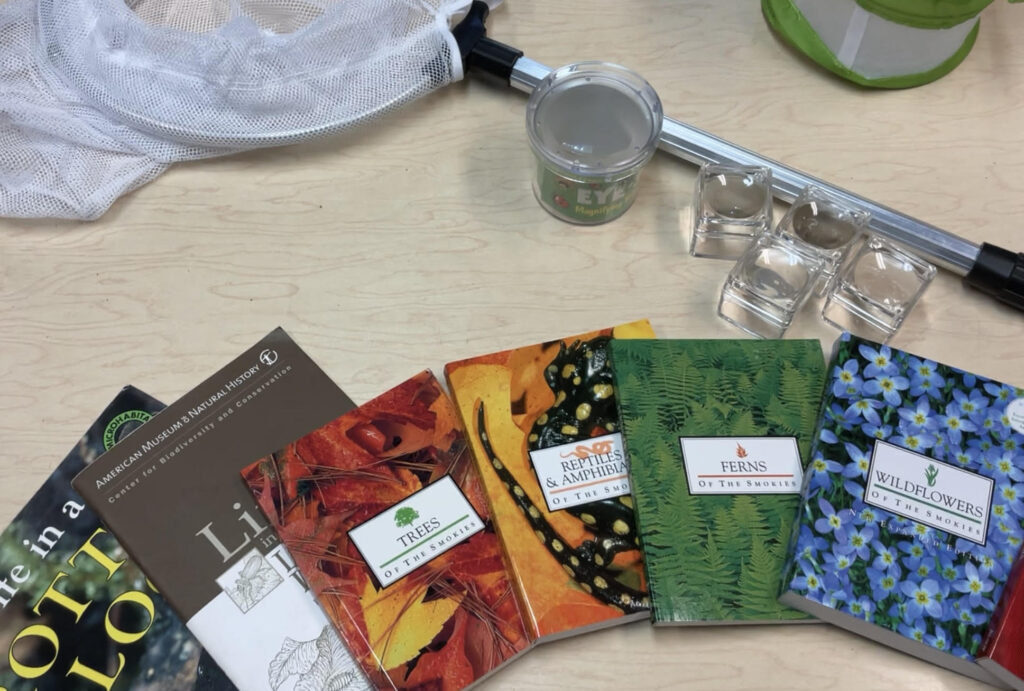
iScience videos
DLiA’s iScience series can be watched here or on YouTube
BioBlitzes and how to plan them – resources from iNaturalist and National Geographic
NatGeo pre-BioBlitz classroom activity: Introducing Biodiversity and BioBlitz
NatGeo post-BioBlitz classroom activity: Analyzing BioBlitz Data

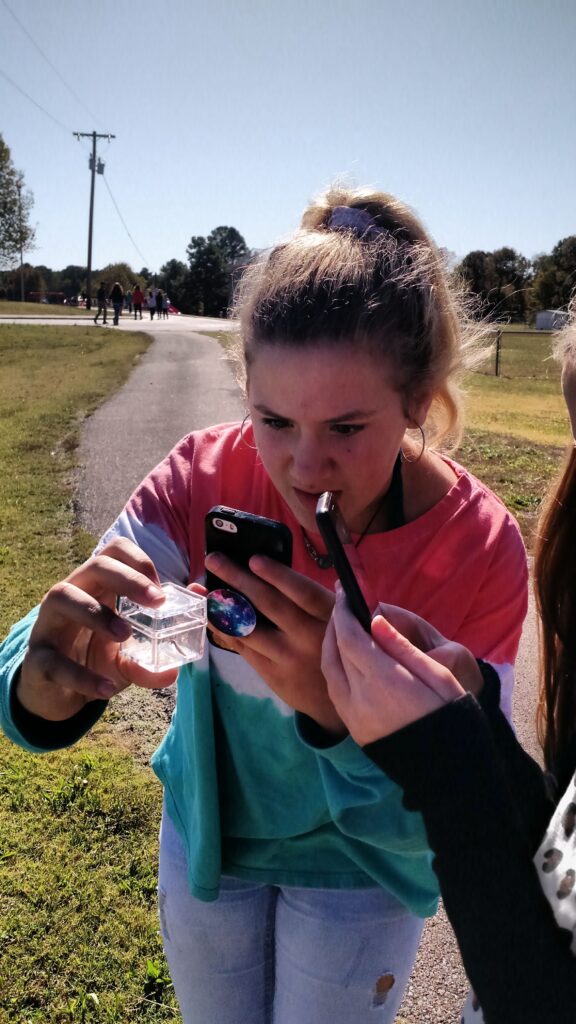
Questions? Email the iScience Coordinator at
